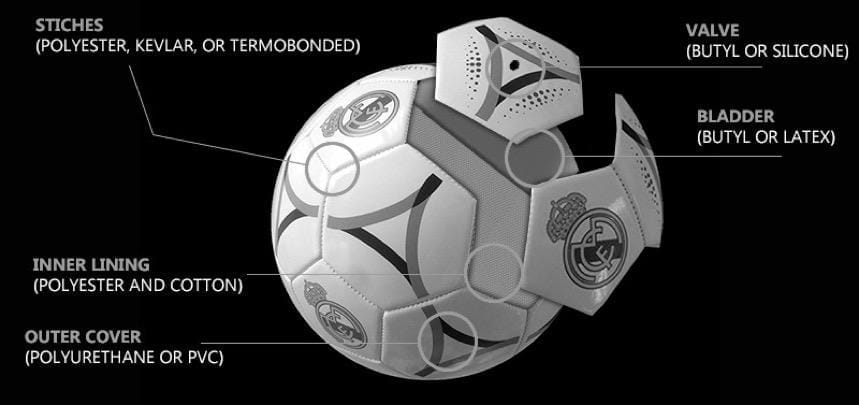SOCCER Ball Construction
STITCHED
Stitching plays a key role in determining the quality of a soccer ball. The issue of whether to choose hand stitching or machine stitching for soccer balls can be resolved mostly by considering how the item will be used.
Hand-Stitched
- Most high-end balls are hand-stitched
- Tighter and stronger seams, more durable
- Allows for deeper seams, protecting the stitching
- Longer longevity and playability of the ball
Machine Stitched
- Fast and inexpensive method more commonly used for mid-priced balls
- Seams aren’t as deep as the hand -stitched, the stitching isn’t as durable
- Exposed seam easily stretches and will potentially tear
Thermal Bonding / Glue
- Lower-end, practice balls generally have the panels glued together onto the lining
- These offer a harder feel and are generally less expensive than stitched balls
OUTER COVER MATERIAL
There are three main types of materials used to make soccer balls: PVC (Poly Vinyl Carbonate), PU (Polyurethane) and Leather.
- PU: more responsive to foot work; generally used for match balls
- PVC: more durable; used for training and indoor balls
- Leather: still used in some construction, but frowned upon due to its absorption of water
* Glossy coatings are often used to aid in reducing water absorption and scuffing on softer PU soccer balls.
INNER LININGS
- Helps the ball retain the shape and bounce over the life of the ball
- Material thickness plays a vital part in the quality of hand-sewn soccer balls
- Multiple layers of lining are placed between the cover and the bladder
- Layers are composed of polyester and/or cotton bonded together to give the ball strength, structure and bounce
- Professional soccer balls usually have four or more layers of lining
- Training balls are often constructed with less layers of lining
* Many soccer balls include a foam layer for added cushioning and ball control.
BLADDER
- The bladder in a soccer ball holds the air
- Usually made from rubber, latex or butyl
- Tend to provide better surface tension
- Offer softer feel and response
- Same angle re-bounce characteristics
- Offer the excellent combination of contact quality and air retention
- Found in most middle to upper priced balls
- Offer the softest feel and response
- Do not provide the best air retention
- Micro pores slowly let air escape
- Need to be re-inflated once a week
- Help to close many of the micro pores
- Keep latex soft response and bounce
- Offer an excellent combination of feel and air retention
- Can be found in most recreational balls.
VALVE
- Most balls use butyl valves for air retention, with higher end balls using a silicone-treated valve for superior performance.
- Silicone treated valves are used on some balls for smooth insertion of the inflating needle and added protection from air loss.


